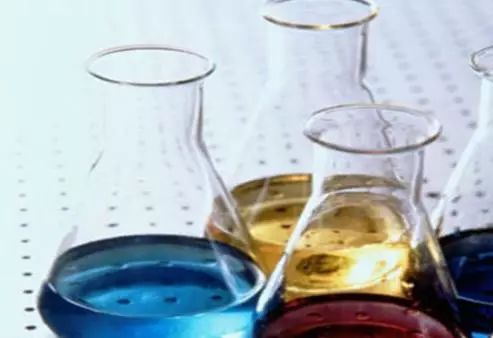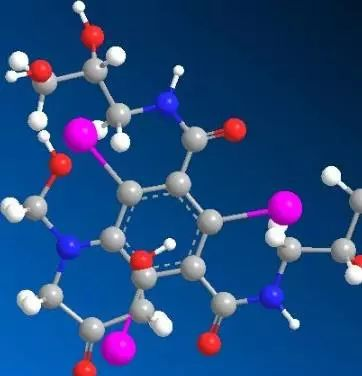Biological surfactants are surface-active metabolic products secreted by microorganisms during cultivation under certain conditions. In comparison to chemically synthesized surfactants, biosurfactants possess unique properties such as structural diversity, biodegradability, broad biological activity, and environmental friendliness. Chemical synthetic surfactants are often influenced by factors such as raw materials, prices, and product performance, leading to significant environmental pollution and harm to human health during production and usage. Consequently, with the increasing awareness of environmental protection and health consciousness, research on biosurfactants has been growing steadily over the past two decades.
1.1 Types of Biosurfactants While chemically synthesized surfactants are typically classified based on their polar groups, biosurfactants are distinguished by their biochemical nature and the different microorganisms producing them. They can generally be categorized into five types: glycolipids, phospholipids and fatty acids, lipopeptides and lipoproteins, polymers, and special surfactants.
1.2 Producing Microorganisms of Biosurfactants Most biosurfactants are metabolic products of bacteria, yeast, and fungi. These microorganisms are often screened from oil-contaminated lakes, soil, or oceans. For instance, Banat et al. isolated two strains of biosurfactant-producing bacteria, Bacillus AB-2 and Y12-B, from oil-sludge-contaminated soil.

Currently, biosurfactants can be produced through two methods: microbial fermentation and enzyme synthesis. In fermentation-based production, the type and yield of biosurfactants depend on the species of producing microorganisms, growth stage, nature of carbon substrates, concentrations of N, P, and metal ions (Mg2+, Fe2+) in the culture medium, and cultivation conditions (pH, temperature, stirring speed, etc.). For example, Davis et al. found that the highest concentration (439.0 mg/L) of surfactin could be obtained when batch-cultivating Bacillus subtilis under conditions of dissolved oxygen depletion and nitrogen limitation. Kitamoto et al. utilized resting cells of Antarctic basidiomycetous yeast to produce mannitol lipid, and after optimizing cultivation conditions, achieved a maximum yield of 140 g/L. The advantages of fermentation-based production include low production costs, diverse types, and simple processes, making it suitable for large-scale industrial production. However, the cost of product separation and purification is relatively high.
Compared to microbial fermentation, surfactant molecules synthesized by enzyme methods are often structurally simpler but still exhibit excellent surface activity. The advantages of enzyme synthesis include low extraction costs, convenient secondary structure modifications, easy purification, and the repeatability of immobilized enzymes. Additionally, surfactants synthesized by enzyme methods can be used for producing high-value-added products, such as pharmaceutical components. Although enzyme costs are currently higher, advancements in genetic engineering to enhance enzyme stability and activity hold the promise of reducing production costs.
The extraction of fermentation products (also known as downstream processing) accounts for approximately 60% of the total production cost of biosurfactants, posing a major obstacle to the commercialization of biosurfactant products. The optimal extraction method for biosurfactants varies with different fermentation operations and their physicochemical properties. Solvent extraction is the most commonly used method. For example, Kuyukina et al. used methyl tert-butyl ether to extract biosurfactants produced by Rhodococcus, achieving a high yield of 10 mg/L. Ultrafiltration is a new method used for biosurfactant extraction. Lin et al. extracted lipopeptide biosurfactant surfactin produced by Bacillus subtilis from the fermentation broth using an ultrafiltration membrane with a molecular weight cutoff of 30,000 Da, achieving a yield of 95%. Mattei et al. designed a continuous biosurfactant extraction device using a cross-flow filtration method, resulting in a high yield of 3 g/L. Methods such as foam separation and ion exchange resin can be used for product extraction in conjunction with continuous fermentation production. Davis et al. continuously extracted surfactin produced by Bacillus subtilis using foam separation, achieving a yield of 71.4%. The extraction process of rhamnolipids involves centrifugal filtration to remove cells, adsorption chromatography to concentrate rhamnolipids on Amberlite XAD-2 resin, purification using ion exchange chromatography, and finally liquid evaporation and freeze-drying to obtain a product with 90% purity and a yield of 60%.
Many chemically synthesized surfactants pose environmental risks due to their non-biodegradability, toxicity, and accumulation in ecosystems. In contrast, biosurfactants, with characteristics such as easy biodegradability and non-toxicity to the environment, are more suitable for pollution control in environmental engineering. For example, in wastewater treatment processes, biosurfactants can be used as flotation collectors to adsorb charged colloidal particles, facilitating the removal of toxic metal ions. Biosurfactants are also applicable in the remediation of sites contaminated with organic compounds and heavy metals.
4.1 Application in Wastewater Treatment Processes
In biological wastewater treatment, heavy metal ions can inhibit or harm microbial communities in activated sludge. Therefore, pretreatment is required when using biological methods to treat wastewater containing heavy metal ions. Currently, hydroxide precipitation is commonly used to remove heavy metal ions from wastewater, but its efficiency is limited by the solubility of hydroxides, leading to less-than-ideal results. Flotation is another method used in wastewater pretreatment, but the use of flotation collectors in subsequent processes, such as the chemically synthesized surfactant sodium dodecyl sulfate, can be challenging due to its slow degradation and potential for secondary pollution. Therefore, there is a need to develop alternatives that are easily biodegradable and environmentally non-toxic, and biosurfactants have the advantage in this regard. However, there is limited research on the application of biosurfactants in this area, with recent reports being scarce. Zouboulis et al. studied the use of biosurfactants as collectors to remove two toxic metal ions, Cr4+ and Zn2+, from industrial wastewater. The results showed that surfactin and lichenysin could effectively separate and adsorb Cr4+ in the form of a complex with αFeO(OH) or a complex formed with FeCl3·6H2O at pH 4, greatly improving the removal efficiency of Cr4+ (50 mg/L), almost reaching 100%. At pH 6, surfactin exhibited a high removal efficiency of Zn2+ (50 mg/L), reaching 96%, while lichenysin showed less significant effects, with a removal rate of around 50%.
4.2 Application in Bioremediation
In the process of using microbial catalysis to degrade organic pollutants and remediate contaminated environments, the use of biosurfactants is advantageous because they can be directly applied as fermentation broth, saving costs associated with surfactant separation, extraction, and product purification. Research on bioremediation began in the early 1980s, and there have been many successful engineering examples to date. For instance, Harvey et al. added biosurfactant alginic acid lipid produced by Pseudomonas fluorescens to seawater contaminated by the Exxon Valdez oil spill in Alaska's Prince William Sound, significantly accelerating the degradation of crude oil. This represents the largest and most successful field bioremediation application to date. However, there are few reports on the successful use of biosurfactants in environmental pollution control in China and internationally.
4.2.1 Facilitating the Degradation of Alkanes
Alkanes are the main components of petroleum. During petroleum exploration, extraction, transportation, processing, and storage, petroleum is inevitably released into the environment, causing soil and groundwater pollution. To enhance the degradation rate of alkanes, the addition of biosurfactants can increase the hydrophilicity and biodegradability of hydrophobic compounds, increase the microbial population, and subsequently improve the degradation rate of alkanes. Noordman et al. studied the degradation of hexadecane by different types of surfactants, and the results indicated that the biosurfactant rhamnolipid had a significantly better effect on the degradation of hexadecane compared to 14 other chemically synthesized surfactants. Rahman et al. found that in heap systems with the addition of 0.1% and 1% rhamnolipid, the degradation rates of hydrocarbons in gasoline-contaminated soil increased by 11.9% to 45.2% and 20.2% to 48.3%, respectively. Recently, Rahman et al. found that adding rhamnolipid significantly increased the degradation rate of alkanes during the mixing of sludge-like deposits at the bottom of oil storage tanks with soil.

4.2.2 Facilitating the Degradation of Polycyclic Aromatic Hydrocarbons (PAHs)
Polycyclic aromatic hydrocarbons (PAHs) are increasingly being recognized for their carcinogenic, teratogenic, and mutagenic effects, and many countries have listed them as priority pollutants. Research has shown that microbial degradation is the primary way to remove PAHs from the environment, and the degradation performance of PAHs decreases with an increase in the number of benzene rings. PAHs with three rings or fewer are easily degradable, while those with four rings or more are more difficult to degrade. So far, there are three hypotheses about how PAH-degrading bacteria promote the bioavailability of PAHs: (1) by secreting biosurfactants to facilitate the degradation of PAHs, (2) by producing extracellular polymers to facilitate the degradation of PAHs, and (3) by forming biofilms to facilitate the degradation of PAHs. Experimental results from Johnsen et al. showed that the bacterium Pseudomonas putida promoted the degradation of polycyclic aromatic compounds by secreting the biosurfactant gluco-oligosaccharide.
4.2.3 Application in the Removal of Toxic Heavy Metals
The remediation of soil contaminated with toxic heavy metals has been a hot research topic in the academic community due to the concealed, stable, and irreversible nature of the pollution process in soil environments. Various technologies, such as vitrification, immobilization/stabilization, and heat treatment, are currently used to remove heavy metals from soil. Vitrification treatment is feasible but involves large-scale engineering and high costs. Immobilization processes are reversible, requiring continuous monitoring of treatment effects. Heat treatment techniques are only suitable for removing volatile heavy metals such as Hg. Consequently, low-cost biological treatment methods have been rapidly developed in recent years. People have begun using biosurfactants, which are non-toxic to the ecological environment, for the remediation of heavy metal-contaminated soil.
Experimental results from Torrens et al. [20] showed that adding rhamnolipid increased the removal efficiency of Cd by 8% to 54%. Mulligan et al. used 0.25% surfactin for continuous washing of soil contaminated with heavy metals for 5 days, achieving a removal rate of 70% for Cu. Mulligan et al. separately used three different biosurfactants to wash sediment contaminated with heavy metals Cu and Zn. The three biosurfactants showed different effects on the removal of heavy metals: 0.5% rhamnolipid exhibited a better removal effect on Cu, with a removal rate of 65%; 4% sophorolipid showed a better removal effect on Zn, with a rate of 60%; while surfactin showed limited effects on both, with removal rates of only 15% and 6%. The study also investigated changes in the forms and amounts of heavy metals in the sediment. Rhamnolipid and surfactin mainly removed organic-bound Cu, while sophorolipid mainly removed oxide-bound and carbonate-bound Zn. This research confirmed the feasibility of using biosurfactants to wash sediments and remove heavy metals.
Biosurfactants find wide applications in industries such as petroleum, chemical, pharmaceutical, cosmetics, and food, indicating vast market prospects. Currently, biosurfactant research is mostly in the laboratory or simulation experiment stage. The primary challenge lies in the high production costs, and biosurfactants lack a significant competitive advantage compared to chemically synthesized surfactants, limiting their application in pollution control. To achieve large-scale industrial production of biosurfactants and enhance practical applications, future research will focus on three main aspects:
Selection of High-Yield Strains with Low-Cost Carbon Sources: Strains with the ability to use inexpensive carbon sources and high production yields should be selected. For example, Benincasa et al. utilized waste soap from the sunflower oil production process as the sole carbon source for batch cultivation of Pseudomonas aeruginosa, obtaining a maximum concentration of 16g/L of rhamnolipid.
Design of Economically Efficient Product Separation and Purification Methods: For applications requiring high purity of biosurfactants, economically effective methods for separating and purifying products should be designed. Secondary development of biosurfactant products for use in cosmetics, food, pharmaceuticals, and other industries can help offset the high production costs of biosurfactants.
Study of the Mechanism of Biosurfactant-Producing Bacteria in Degrading Organic Pollutants: Research should focus on understanding the mechanisms of biosurfactant-producing bacteria in degrading organic pollutants. This understanding can clarify the role of biosurfactants in the field, enabling rapid and effective degradation of pollutants when applied directly as fermentation broth in bioremediation processes.
Wuxi Weiheng is a professional OEM supplier of amines and amine derivatives. We have a dedicated research and development team as well as a technical team, with over 1000 employees in the company. If you require large quantities of amines and amine derivatives, we will provide you with the most cost-effective products and high-quality services,contact us!